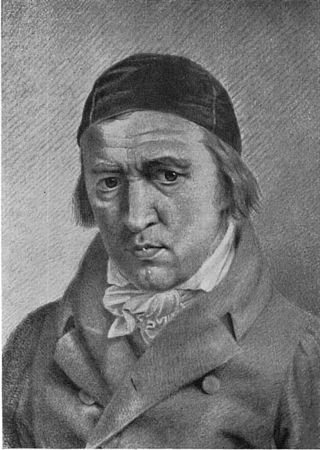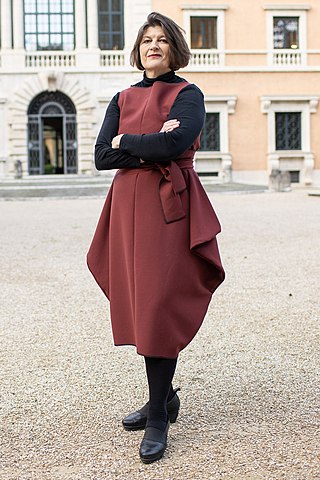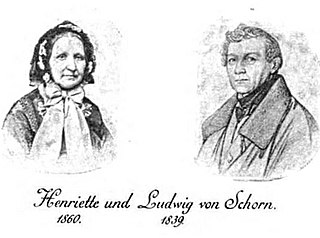

Franz Theobald Horny (23 November 1798, Weimar – 23 June 1824, Olevano Romano) was a German painter in the Romantic style.


Franz Theobald Horny (23 November 1798, Weimar – 23 June 1824, Olevano Romano) was a German painter in the Romantic style.
He attended the Weimar Princely Free Drawing School, where he studied under Johann Heinrich Meyer, Goethe's advisor on artistic matters. [1] His father, the engraver Konrad Horny, was also a teacher there. A decisive turn in his career came when he met the art historian, collector and patron Carl Friedrich von Rumohr, who took him along on a trip to Rome [1] and helped to place him as a student in the workshop of Joseph Anton Koch.
He remained there until 1817, torn between his German-Romantic upbringing on one hand and the influences of the Nazarene movement on the other. He accompanied Rumohr on trips to Olevano and Frascati. On one of these trips, he met Peter von Cornelius who used his connections to obtain work for Horny, painting frescoes at the "Casino Massimo" (now known as the Villa Giustiniani Massimo ), owned by the princely Massimo family. [1]
Upon his return to Germany, he worked primarily as a landscape painter. Shortly thereafter, he was diagnosed with tuberculosis. As his illness worsened, he went back to Italy in hopes that the climate would be more amenable, and settled in Olevano in 1822. [1] His disease worsened, however and, after much suffering, he died there. He was buried in the local cemetery.
In 1998/99, to celebrate Horny's 200th birthday, the Hamburger Kunsthalle, in cooperation with the Kunstsammlungen zu Weimar, presented "Ein Romantiker im Lichte Italiens", the first full exhibition devoted to Horny's work. [2]

The epithet Nazarene was adopted by a group of early 19th-century German Romantic painters who aimed to revive spirituality in art. The name Nazarene came from a term of derision used against them for their affectation of a biblical manner of clothing and hair style.

Philipp Otto Runge was a German artist, a draftsman, painter, and color theorist. Runge and Caspar David Friedrich are often regarded as the leading painters of the German Romantic movement. He is frequently compared with William Blake by art historians, although Runge's short ten-year career is not easy to equate to Blake's career. By all accounts he had a brilliant mind and was well versed in the literature and philosophy of his time. He was a prolific letter writer and maintained correspondences and friendships with contemporaries such as Carl Ludwig Heinrich Berger, Caspar David Friedrich, Johann Wolfgang von Goethe, Friedrich Wilhelm Joseph Schelling, Henrik Steffens, and Ludwig Tieck. His paintings are often laden symbolism and allegories. For eight years he planned and refined his seminal project, Tageszeiten, four monumental paintings 50 square meters each, which in turn were only part of a larger collaborative Gesamtkunstwerk that was to include poetry, music, and architecture, but remained unrealized at the time of his death. With it he aspired to abandon the traditional iconography of Christianity in European art and find a new expression for spiritual values through symbolism in landscapes. One historian stated "In Runge's painting we are clearly dealing with the attempt to present contemporary philosophy in art." He wrote an influential volume on color theory in 1808, Sphere of Colors, that was published the same year he died.

Carl Friedrich von Rumohr was a German art historian, writer, draughtsman and painter, agricultural historian, connoisseur of and writer about the culinary arts, art collector and patron of artists.

Wilhelm von Kobell was a German painter, printmaker and teacher.

Johann Heinrich Meyer was a Swiss painter, engraver and art critic. He served as the second Director of the Weimar Princely Free Drawing School. A close associate of Johann Wolfgang von Goethe, he was often referred to as "Goethemeyer".

Friedrich Carl Gröger was a north-German portrait painter and lithographer. One of the most respected portraitists of his time in northern Germany, his works are to be found in several museums, including the Hamburger Kunsthalle, as well as in north German, Holstein and Danish private collections.
Max Peiffer Watenphul was a German artist. Described as a "lyric poet of painting", he belongs to a "tradition of German painters for whom the Italian landscape represented Arcadia." In addition to Mediterranean scenes, he regularly depicted Salzburg and painted many still lifes of flowers. As well as oil paintings, his extensive body of work encompasses watercolours, drawings, enamel, textiles, graphic art, and photographs.

Anita Clara Rée was a German avant-garde painter during the Weimar Republic. She killed herself after the anti-Semitic government declared her work degenerate. Her works were saved by a groundskeeper.

Franz Nölken was a German Expressionist painter; occasionally associated with Die Brücke, an artists' society in Dresden.

Alfred Lichtwark was a German art historian, museum curator, and art educator in Hamburg. He is one of the founders of museum education and the art education movement.

Woldemar Friedrich von Olivier was a German history painter in the Romantic style, often associated with the Nazarene movement.

Johann Ernst Heinsius was a German portrait painter and miniaturist.

Ferdinand Schauss, or Schauß was a German painter who specialized in portraits, genre scenes and mythological characters.

Franz Gustav Arndt was a German landscape and genre painter.

Otto Reiniger was a German landscape painter in the Impressionistic style. Most of his works feature the area immediately surrounding Stuttgart, and he was particularly praised for his depictions of flowing water.

Julia Draganović is a German curator and cultural manager. German-Italian cultural relations have been a recurring theme in her work. In July 2019 she became director of the German Academy in Rome Villa Massimo.

Robert Schneider was a German portrait painter who worked in Hamburg and Lübeck. He was one of the first portraitists in that area to move from the earlier Romanticized style to more nearly pictorial representations.

Johann Karl Ludwig Schorn, after 1838 von Schorn was a German art historian and university Professor. His second wife was the poet, Henriette von Schorn.

Friedrich von Nerly, originally Christian Friedrich Nehrlich was a German painter in the Romantic Style; primarily known for his vedute of Venice. He is sometimes referred to as "The Elder", to distinguish him from his son, the painter Friedrich Paul Nerly. His first name is also seen as "Federico" and "Federigo".

Johann Konrad Horny was a German painter, graphic artist, and copper engraver.